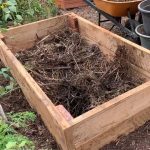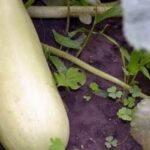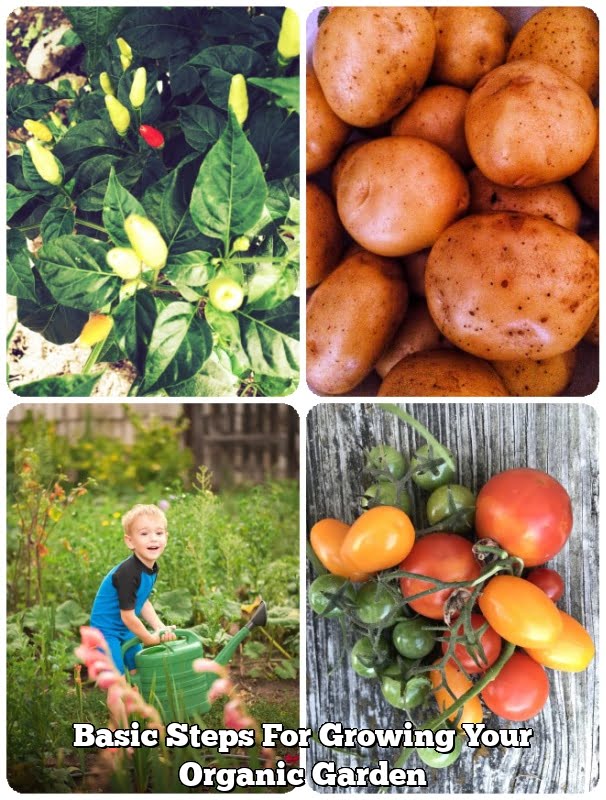Are you thinking about starting your own vegetable garden but not sure where to begin? In this article, we will provide you with basic vegetable gardening tips to help you get started on the right foot. From selecting the right location to harvesting and maintaining your garden, we’ve got you covered. Whether you’re a beginner or just looking for some new tips, this article is for you.
Choosing the right location for your vegetable garden is essential to its success. Understanding the soil and its importance in vegetable gardening is also crucial for healthy plant growth. We will discuss these topics in detail and provide you with valuable insights and recommendations.
In addition, we will cover how to choose the best vegetables for your garden, preparing and planting your garden, as well as watering and fertilizing tips for healthy plants. We will also address pest and disease management, harvesting techniques, and maintenance tips to keep your garden thriving throughout the growing season. So, let’s dive into the world of basic vegetable gardening.
Selecting the Right Location for Your Vegetable Garden
When it comes to basic vegetable gardening tips, selecting the right location for your garden is crucial to the success of your vegetables. Here are some key factors to consider when choosing the perfect spot for your vegetable garden:
1. Sunlight: Ensure that your chosen location receives at least 6-8 hours of direct sunlight per day. Most vegetables thrive in full sunlight, so it’s essential to pick a spot with ample sunshine.
2. Soil Quality: Pay attention to the quality of the soil in your selected area. It’s important to have well-draining soil with good fertility and texture. Conduct a soil test to determine its pH level and nutrient content, and make any necessary amendments before planting.
3. Access to Water: Your vegetable garden should be located near a water source for easy irrigation. Consider installing a drip or soaker hose system to ensure efficient and consistent watering for your plants.
Additionally, it’s important to avoid areas where water tends to pool or where the soil becomes waterlogged after rainfall. Excess moisture can lead to root rot and other plant diseases, so choose a well-drained location for your vegetable garden.
By taking these factors into account, you can set up your vegetable garden for success right from the start. These basic vegetable gardening tips will help you create an optimal growing environment for your plants, ultimately leading to a bountiful harvest of fresh, healthy vegetables.
Understanding Soil and Its Importance in Vegetable Gardening
When it comes to basic vegetable gardening tips, understanding the soil and its importance is crucial for a successful harvest. The quality of the soil directly affects the growth and health of your vegetables, making it a vital factor to consider before planting.
The Importance of Soil pH
One important aspect of understanding soil in vegetable gardening is knowing the pH level. Most vegetables thrive in soil with a pH level between 6.0 and 7.0. Testing your soil’s pH will help you determine if it needs any adjustments to create the ideal growing environment for your vegetables.
Soil Preparation
Before planting your vegetables, it’s essential to prepare the soil properly. This includes removing any weeds, rocks, or debris from the area, tilling the soil to improve its texture, and adding organic matter such as compost or well-rotted manure to increase its fertility.
Improving Soil Drainage
Good drainage is crucial for healthy vegetable growth. If your soil tends to be waterlogged, you can improve drainage by adding organic material like compost or peat moss. Additionally, raised beds can also help improve drainage in areas with heavy clay soils.
Understanding the composition and characteristics of your soil is fundamental for successful vegetable gardening. By considering these important tips for understanding soil in vegetable gardening, you can provide an optimal growing environment for your vegetables and ultimately enjoy a bountiful harvest.
Choosing the Best Vegetables for Your Garden
When it comes to starting your own vegetable garden, selecting the right vegetables to grow is a crucial first step. There are many factors to consider when choosing the best vegetables for your garden, including your local climate, the amount of space you have available, and your personal preferences. To ensure a successful and bountiful harvest, it’s important to carefully select the vegetables that will thrive in your specific gardening environment.
One of the most important things to consider when choosing vegetables for your garden is your local climate and growing zone. Different vegetables have different temperature and sunlight requirements, so it’s essential to choose varieties that are well-suited to your particular region. For example, leafy greens like lettuce and spinach tend to do well in cooler temperatures, while heat-loving crops such as tomatoes and peppers require warmer conditions to thrive.
Another key consideration when choosing vegetables for your garden is the amount of space you have available. If you have limited space, consider growing compact or dwarf varieties of your favorite vegetables, or focus on crops that can be grown vertically, such as pole beans or cucumbers. Additionally, some vegetables can be successfully grown in containers, making them a great option for small gardens or urban settings.
In addition to climate and space considerations, it’s important to think about what types of vegetables you enjoy eating. By choosing vegetables that you and your family love to eat, you’ll be more motivated to put in the time and effort required to care for your garden throughout the growing season.
| Factors | Considerations |
|---|---|
| Local Climate | Choose varieties suited to temperature and sunlight requirements |
| Space Availability | Grow compact or dwarf varieties; consider vertical gardening |
| Personal Preferences | Select vegetables that you enjoy eating |
Preparing and Planting Your Vegetable Garden
When it comes to preparing and planting your vegetable garden, there are several key steps to keep in mind to ensure a successful harvest. Here are some basic vegetable gardening tips to help you get started:
1. Clear the Area: Before you start planting, it’s important to clear the area where your vegetables will be grown. Remove any weeds, rocks, or debris that may hinder the growth of your plants.
2. Soil Preparation: Once the area is cleared, it’s time to prepare the soil. Test the pH level of your soil and make any necessary adjustments by adding compost or other organic matter to improve its fertility and structure.
3. Planting Your Vegetables: When it comes to actually planting your vegetables, make sure to follow the spacing and depth recommendations for each type of plant. Some plants may require more space than others to thrive, so be sure to do your research before getting started.
By following these basic vegetable gardening tips for preparing and planting your garden, you can set yourself up for a bountiful harvest of delicious and nutritious vegetables. Whether you’re a beginner or experienced gardener, taking the time to properly prepare your garden will pay off in the long run.
Watering and Fertilizing Tips for Healthy Vegetables
Successful vegetable gardening relies on proper watering and fertilizing to ensure healthy plant growth and abundant harvests. Here are some basic vegetable gardening tips for watering and fertilizing your garden:
1. Watering: It’s crucial to water your vegetables consistently, especially during dry periods. The general rule of thumb is to provide at least 1 inch of water per week, either through rainfall or irrigation. However, certain vegetables may require more frequent watering, such as tomatoes and peppers. To prevent moisture-related issues like mildew or rot, it’s best to water in the morning so that the foliage has time to dry before nightfall.
2. Fertilizing: Different vegetables have different nutritional needs, so it’s important to choose the right type of fertilizer based on the specific requirements of your plants.
For example, leafy greens like lettuce and spinach benefit from nitrogen-rich fertilizers, while root vegetables such as carrots and beets thrive with a balanced fertilizer that includes phosphorus and potassium. It’s advisable to apply fertilizer according to the instructions on the product label, usually in early spring before planting and during the growing season.
3. Soil Testing: Before applying fertilizers, it’s recommended to conduct a soil test to determine the pH level as well as nutrient deficiencies or excesses in your garden soil. This will help you adjust your fertilization practices accordingly, ensuring that your vegetable plants have access to the nutrients they need for healthy growth.
By following these watering and fertilizing tips, you can promote strong, vibrant vegetable plants that are more resilient against pests and diseases, ultimately leading to a bountiful harvest.
| Vegetable | Watering Needs |
|---|---|
| Tomatoes | Frequent watering; Ensure consistent moisture |
| Lettuce | Regular watering; Keep soil consistently moist but not waterlogged |
| Cucumbers | Frequent watering; Particularly during fruit development stage |
Pest and Disease Management in Vegetable Gardening
Identifying Common Pests and Diseases
One of the key challenges in vegetable gardening is dealing with pests and diseases that can jeopardize the health of your plants. Common pests include aphids, caterpillars, and beetles, while diseases such as powdery mildew and blight can also wreak havoc on your garden. It’s important to regularly inspect your plants for any signs of infestation or disease so that you can take action promptly.
Natural Remedies for Pest and Disease Control
While chemical pesticides can be effective against pests and diseases, they can also have negative effects on beneficial insects and the environment. Many gardeners prefer to use natural remedies for pest and disease control, such as companion planting, introducing beneficial insects like ladybugs, or spraying homemade organic solutions like neem oil or garlic spray. These methods are safer for the environment and can help maintain a healthy balance in your garden.
Practicing Good Garden Hygiene
Another important aspect of pest and disease management in vegetable gardening is practicing good garden hygiene. This includes removing any dead or diseased plants, cleaning up plant debris regularly, and rotating crops to prevent the buildup of pests and diseases in the soil. By maintaining a clean and tidy garden environment, you can reduce the risk of pest infestations and disease outbreaks.
By being proactive in identifying potential issues, using natural remedies for control, and maintaining good garden hygiene practices, you can effectively manage pests and diseases in your vegetable garden to ensure the health and productivity of your plants. Incorporating these strategies into your vegetable gardening routine will help you enjoy a bountiful harvest year after year.
Harvesting and Maintaining Your Vegetable Garden
When it comes to harvesting, it is important to pick vegetables at the peak of ripeness. This will ensure that you are enjoying the best flavor and nutritional value from your produce. Be sure to harvest regularly to encourage continued production from your plants. Some vegetables, such as tomatoes and cucumbers, may need daily harvesting during peak season.
Maintenance of your vegetable garden involves tasks such as weeding, watering, and monitoring for pests and diseases. Weeds can compete with your vegetables for nutrients and water, so it is important to keep them under control. Regular watering is essential for healthy plant growth, especially during dry periods.
Using mulch can help retain moisture in the soil and reduce the frequency of watering needed. Keeping an eye out for pests and diseases will allow you to take prompt action if any issues arise.
By following these basic vegetable gardening tips for harvesting and maintaining your garden, you can enjoy a bountiful harvest of fresh, nutritious produce throughout the growing season. With proper care and attention, your vegetable garden can provide you with delicious homegrown food for months to come.
Additional Tips for Successful Vegetable Gardening
In conclusion, successful vegetable gardening requires not only the knowledge of the basic techniques but also additional tips to ensure a bountiful harvest. One of the most important basic vegetable gardening tips is to regularly monitor and maintain the garden. This includes checking for pests and diseases, weeding, watering, and fertilizing as needed. By staying on top of these tasks, you can ensure that your vegetables are healthy and thriving throughout the growing season.
Another important tip for successful vegetable gardening is to practice crop rotation. This involves changing the location of where specific types of vegetables are grown each year, which helps prevent soil depletion and reduce the risk of pests and diseases. Additionally, making use of natural remedies and organic pesticides can help manage potential pest problems without harming the environment or beneficial insects in your garden.
Furthermore, it’s crucial to keep learning and experimenting with different techniques and methods in vegetable gardening. Seek out resources such as books, workshops, or online forums to expand your knowledge and skills. Gardening is a continuous learning process, so don’t be afraid to try new things while keeping in mind the fundamental principles of good vegetable gardening practices.
By incorporating these additional tips along with the basic vegetable gardening tips mentioned earlier, you can have a productive and fulfilling experience growing your own vegetables at home. With careful planning, maintenance, and a little bit of trial and error, you’ll be able to enjoy fresh produce straight from your garden all season long. Happy gardening.
Frequently Asked Questions
What Are the Basics of Vegetable Gardening?
The basics of vegetable gardening involve selecting the right location with adequate sunlight, good soil drainage, and access to water. It also requires proper planning, choosing the right vegetables for your climate, and regular maintenance such as watering and weeding.
What Are 5 Things You Should Do to Prepare a Good Veggie Garden?
To prepare a good veggie garden, it’s important to start with soil preparation by testing and improving its quality. Next, consider the layout and size of your garden, choose the right vegetables for your region, provide proper irrigation, and consider adding organic matter to the soil.
What Is the Easiest Vegetable Garden for Beginners?
The easiest vegetable garden for beginners typically includes low-maintenance plants such as tomatoes, lettuce, radishes, and green beans. These plants are relatively easy to grow, have shorter growing seasons, and don’t require specialized care or equipment.

If you’re looking to get into vegetable gardening, or are just looking for some tips on how to make your current garden better, then you’ve come to the right place! My name is Ethel and I have been gardening for years. In this blog, I’m going to share with you some of my best tips on how to create a successful vegetable garden.





